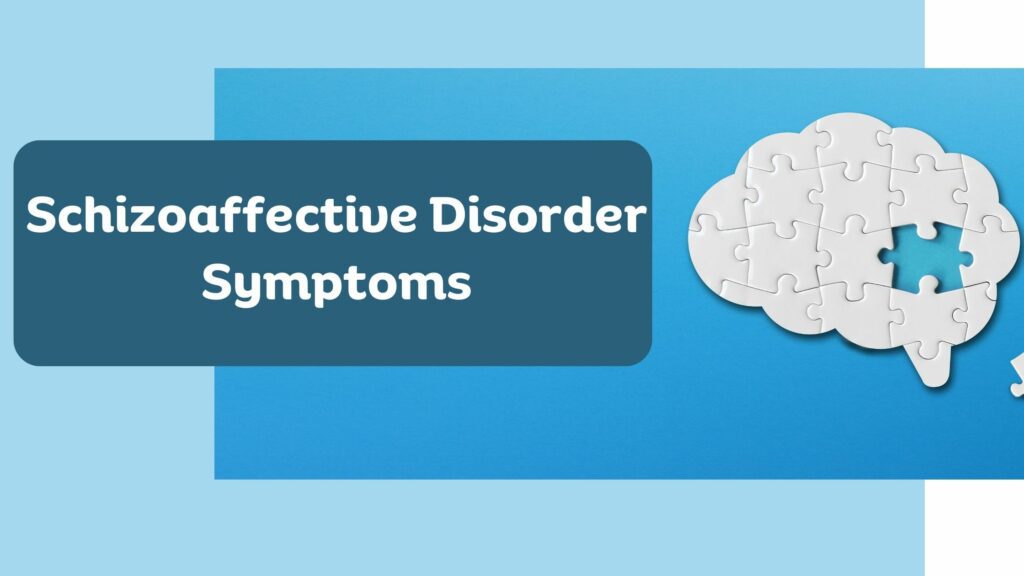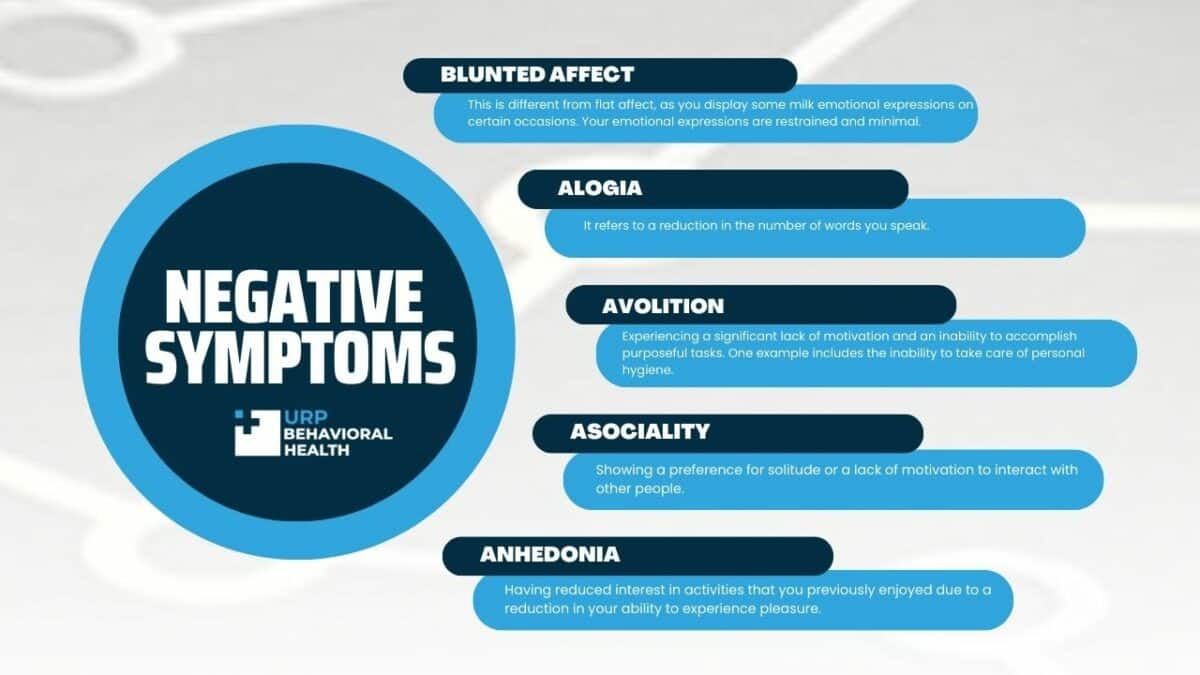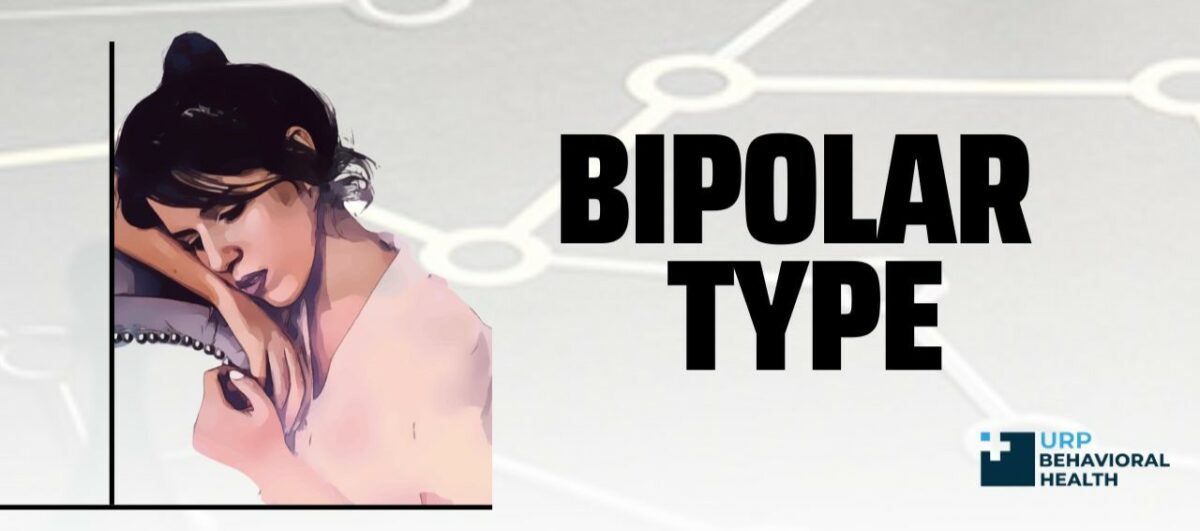Schizoaffective Disorder Symptoms

Imagine seeing things that aren’t really there, hearing things that aren’t really there, and believing things that aren’t true. Couple that with mood difficulties, and everyday interactions and activities become all the more difficult. That’s schizoaffective disorder.
Compared to schizophrenia, schizoaffective disorder affects far fewer people. With a very low lifetime prevalence rate, it’s a rare psychological condition. Nevertheless, it can have significant effects on people who develop the disorder. At URP Behavioral Health, our team of interdisciplinary specialists can diagnose, treat, and manage schizoaffective disorder among people who have developed the condition.
Whether you or a loved one has schizoaffective disorder, a good place to start is to understand the symptoms it causes. In schizoaffective disorder, you experience psychotic symptoms, which are a characteristic of schizophrenia, as well as a major mood episode.

Hallucinations and Delusions
Hallucinations are when you falsely perceive objects or events involving your senses. They feel real but aren’t. You can experience auditory, visual, olfactory, and tactile hallucinations. The most common type of hallucination is auditory, followed by visual. These occur when you hear or see things that aren’t there. In contrast, olfactory and tactile hallucinations are less common. When you experience hallucinations, you’re unable to distinguish between what’s real and what’s not.
Delusions are false, irrational beliefs that you hold despite having evidence that they’re not real. The type of delusion you experience is categorized based on the nature of your beliefs. The different types of delusions include
- Persecutory: A persistent belief that others want to harm or mistreat you.
- Grandiose: Unfounded belief that you have a special mission, immense wealth, or hidden powers.
- Somatic: A belief that there’s something wrong with a part of or your entire body. Some common examples include being infested by parasites or insects or some parts of the body that are misshapen.
- Jealous: An irrational belief that your romantic partner or spouse is being unfaithful.
- Erotomanic: An irrational belief that someone, usually of a higher status, is in love with you.
- Mixed: When you experience different types of delusions, but none occur more commonly than others.
Disorganized Speech and Behavior
Another symptom of schizophrenia is that you have disorganized speech. This means you speak incoherently, go off on a tangent, or make illogical statements. Common signs of schizoaffective disorder include:
- Loose Associations: Moving from one topic to the next without connecting them.
- Perseveration: Saying the same thing over and over again
- Using rhyming words without making sense
- Using words that only have meaning for you
- In severe cases of cognitive disorganization, it becomes very difficult to understand what you’re saying.
In schizoaffective disorder, disorganized behavior affects your ability to perform goal-directed behaviors. That means you’ll be unable to start or complete a task properly. This can make it very challenging to function independently. Some signs of disorganized behavior include:
- A decline in the basic functioning
- Poor impulse control
- Impairment in routine behaviors like brushing teeth or dressing yourself
- Showing inappropriate emotional responses
- Engaging in behaviors without any purpose

Negative Symptoms of Schizoaffective Disorder
Blunted affect
This is different from flat affect, as you display some milk emotional expressions on certain occasions. Your emotional expressions are restrained and minimal.
Alogia
It refers to a reduction in the number of words you speak.
Avolition
Experiencing a significant lack of motivation and an inability to accomplish purposeful tasks. One example includes the inability to take care of personal hygiene.
Asociality
Showing a preference for solitude or a lack of motivation to interact with other people.
Anhedonia
Having reduced interest in activities that you previously enjoyed due to a reduction in your ability to experience pleasure.
These symptoms commonly occur in people with schizophrenia and schizoaffective disorder. Around 60 percent of people with the condition experience prominent negative symptoms that require treatment.
Depressive Type
If you have the depressive type of schizoaffective disorder, you experience a major depressive episode. These symptoms persist in the active and residual phases of the illness, so you experience them despite not having psychotic schizoaffective symptoms. They include:
- Feeling sad and hopeless
- Loss of interest and pleasure in activities you once enjoyed
- Sleeping too much or too little
- Feeling fatigued
- Reduced appetite or increased cravings resulting in weight loss or gain
- Trouble thinking and concentrating
- Having feelings of worthlessness

Bipolar Type
If you have bipolar-type schizoaffective disorder, you have manic and depressive episodes in addition to psychotic symptoms. And these episodes occur even when you don’t experience symptoms like hallucinations and delusions.
During a manic episode, you may show symptoms such as:
- Feelings of restlessness or high energy
- Increased irritability
- Increased confidence
- Racing thoughts and talking at a fast pace
- Easily distracted
- Not being able to stick to a sleep schedule
- Thinking that you can take on more difficult and challenging tasks, which could result in risk-taking behavior
- Behaving impulsively, such as making unwise business decisions, having sexual encounters with multiple different partners, spending money impulsively, taking illicit substances, or gambling
- Increased sociability and being talkative
FAQs
Some of the commonly asked questions regarding schizoaffective disorder include.
The two different types of schizoaffective disorder are the depressive type and the bipolar type. In the depressive type, you experience a major depressive episode along with psychotic symptoms. And in the bipolar type, you have manic and depressive episodes with psychotic symptoms.
The main difference is that schizoaffective disorder includes a major mood episode along with schizophrenia symptoms.
URP Behavioral Health takes a holistic approach to treating psychological disorders. The inpatient treatment program features a mix of group, family, and individual therapy, as well as holistic treatments like therapeutic massage, yoga, and art therapy. This is combined with comfortable living conditions, balanced meals, and a focus on overall wellness for improved outcomes.
Let Us Guide You Towards Healing
We know that seeking treatment can be overwhelming, but our staff is here to make the process as smooth as possible. We’re available 24/7 to address any questions or concerns you may have.

